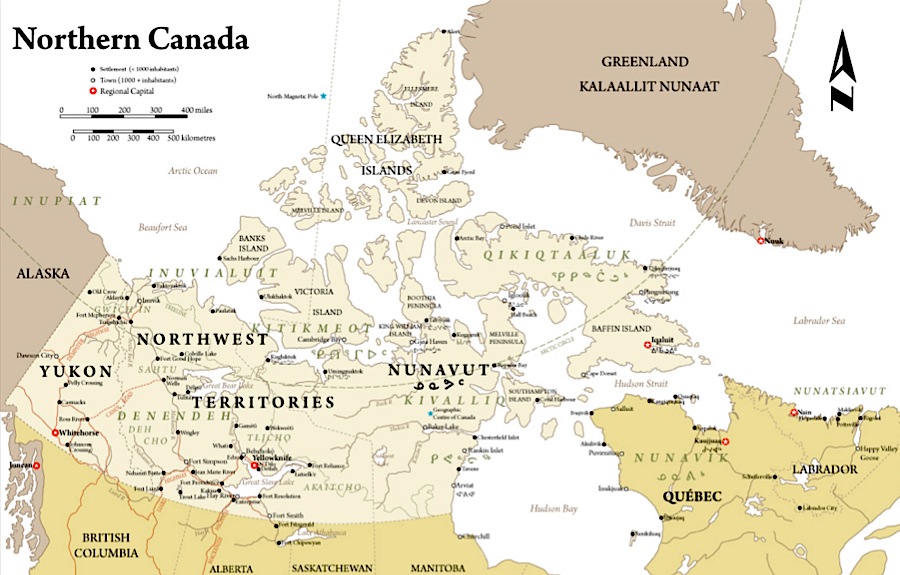Mining sector woes continue to limit economic growth in Canada’s territories in 2016
Declining metal and mineral prices, rising global inventories of most mining commodities and easing growth in the Chinese economy will weigh on the territories’ economies this year. Nunavut and Yukon are expected to see positive but modest growth in 2016, but the economy of the Northwest Territories (N.W.T.) will remain virtually flat this year, according to The Conference Board of Canada’s latest Territorial Outlook.
“All three territories faced difficult economic conditions in 2015, and the hard times are not over yet. The mining sector will continue to face headwinds as most of the same conditions that prevailed last year are expected to continue over the next couple of years,” saidMarie-Christine Bernard, Associate Director, Provincial and Territorial Forecast. “On a more positive note, public investment in much-needed infrastructure will help the economies of Nunavut and Yukon return to growth this year.”
HIGHLIGHTS
- In 2016, real GDP is expected to advance by 2.7 per cent in Yukon and 1.2 per cent in Nunavut.
- Real GDP growth in the N.W.T. will be virtually flat, forecast to hit 0.7 per cent this year.
- Resource development is expected to eventually pick up as additional mines come online at the end of this decade and in the 2020s.
Yukon
Following three years of declines, Yukon’s economy is expected to get back into positive territory in 2016, with projected growth of 2.7 per cent. Despite the commodity price slump and easing demand for base metals on the global market, Yukon’s mining industry is poised to increase output by 5.4 per cent in 2016 as Capstone processes higher grade ore at Minto. However, Capstone recently announced that it could cease open-pit mining in August if metal prices don’t improve. If this occurs, there would be no producing mines in the territory and it would significantly hamper economic growth. Also, no new mines are expected to move into the development phase over the near term. This will weigh on the territory’s construction industry, which is expected to see little growth over the next two years
Strong government spending will help offset some of the slowdown in mining. Yukon’s 2015–16 capital budget is the largest in the territory’s history and many investments in health facilities, schools, and other infrastructure are expected in 2016. Moreover, Yukon is becoming a tourist destination with overnight visits projected to increase by 2.5 per cent in 2016. The weaker Canadian dollar, lower gasoline prices, and an increased awareness of Yukon as a tourist destination are all factors benefiting the territory’s tourism industry.
Nunavut
Nunavut can expect a more positive outlook as public sector projects and mineral exploration help turn the economy around over the medium term. The public sector will be investing in infrastructure in the next few years, including the construction of the $143-millionCanadian High Arctic Research Station (CHARS) in Cambridge Bay and the $300-million upgrade to the Iqaluit airport. Both projects are slated to continue until 2017. As Agnico Eagle continues to cut back gold production at its Meadowbank mine, Nunavut’s mining output is expected to see 3.6 per cent dip this year before picking up again in 2017. On a more positive note, exploration spending is on the rise in Nunavut, going from $158 million in 2014 to $203 million in 2015. Among the three territories, Nunavut is expected to see the most exploration spending, the bulk of which will be done by senior companies. In all, Nunavut’s economy is forecast to expand by 1.2 per cent in 2016 and grow at an even stronger pace in 2017.
Northwest Territories
The shutdown of De Beers Canada’s Snap Lake mine in December will be a blow to the N.W.T.’s economy. The mine produced about 1.2 million carats in 2014 and accounted for about 13 per cent of the territory’s diamond mining output. The start of production at the Gahcho Kué mine—expected in the third quarter of 2016—should help offset some the impact of the closing of Snap Lake and allow NWT’s economy to grow by 0.7 per cent in 2016. As production ramps up at Gahcho Kué in 2017, the Northwest Territories will see much stronger economic growth and job creation.
To hear The Conference Board of Canada’s webinar titled The Canadian Territorial Outlook 2016: Bracing for Limited Growth, click here.
More News
Rio Tinto, Founders Factory’s Mining Tech Accelerator invests in startups from US and OZ
April 23, 2025 | 04:02 pm
{{ commodity.name }}
{{ post.title }}
{{ post.date }}




Comments